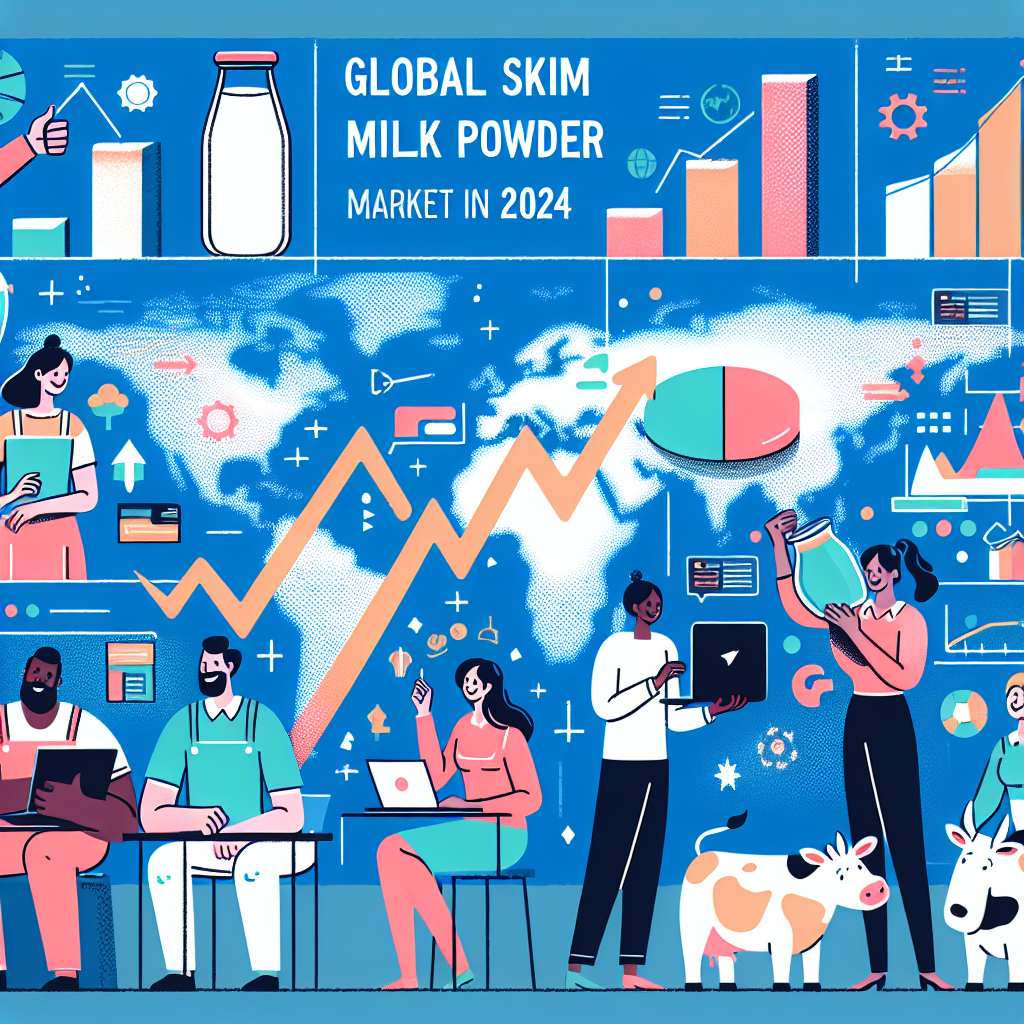Cheese stocks are plummeting. What should dairy farmers know now? Ready for the impact on your business? Read on.
Summary: Have you been keeping up with the surprising changes in cheese stocks this summer? U.S. cheese supplies have significantly dwindled, with July changes breaking traditional seasonal trends. According to the USDA’s Cold Storage report, cheese inventories fell a staggering 51 million pounds from February to July, setting the stage for a complex market. American-style cheeses, including Cheddar, hit their lowest point since November 2020 due to slowed production and robust exports. Butter stocks also experienced a historic dip, declining 23 million pounds from June to July. Despite these dwindling supplies, butter stocks are still 7.4% higher year-over-year, potentially easing worries for the fall baking season. However, tensions remain high as record purchases at the CME spot market indicate ongoing buyer anxiety. Dairy producers must stay adaptive, strategically managing resources and anticipating future fluctuations in supply and demand.
- US cheese supplies fell sharply this summer, defying usual seasonal trends.
- Cheese inventories decreased by 51 million pounds from February to July.
- American-style cheeses, like Cheddar, hit their lowest levels since November 2020.
- Butter stocks dropped by 23 million pounds from June to July, marking a historic low.
- Despite the dip, butter stocks are 7.4% higher compared to last year.
- Record purchases at the CME spot market show ongoing buyer anxiety.
- Dairy producers must adapt by managing resources and anticipating supply and demand fluctuations.

Have you observed the recent decline in cheese stocks? This is not simply a blip but a pattern that impacts your dairy farm’s bottom line. Cheese supply in the United States plummeted by 51 million pounds in six months, contradicting regular seasonal trends. Why is this important to you?
As a dairy farmer, these variations may influence your operations. Lower inventories indicate that cheese prices will be erratic. Are you prepared for this? With solid exports and lower production of Cheddar, your product may be in more demand. Have you observed an increase in spot Cheddar values? Fresh cheese supplies are running low.
The dairy business is experiencing significant shifts in inventory and production rates. To thrive in this ever-changing market, farmers must stay informed and adaptable. Active planning and staying on top of trends are crucial. Let’s delve into what these figures mean for your business, empowering you to make informed decisions.
Are You Aware of the Surprising Cheese Stock Situation This Summer?
It is not a tiny fluctuation! According to the USDA’s Cold Storage report, the United States warehouses had 1.4 billion pounds of cheese at the end of July. Interestingly, cheese supplies regularly grow by around 30 million pounds between February and July. This year, however, we saw a startling reduction of 51 million pounds during the same period. Such a counter-seasonal pattern is causing concerns across the sector and putting tremendous pressure on the cheese market. Have you felt the effect yet?
What’s Behind the Sharp Decline in Cheddar Cheese Inventories?
Let’s discuss American-style cheese inventories, notably Cheddar. Over the previous year, these inventories have dropped significantly, falling in ten of the last twelve months. In July, they reached their lowest point since November 2020.
So, what is driving this trend? It’s the result of sluggish Cheddar production and high export demand. With fewer cows providing milk and February’s milk yield down 1.3%, less raw material is available for cheese manufacture. This has been a challenging year for Cheddar fans and producers alike.
Furthermore, strong exports have severely constrained supplies. International demand for American-style cheeses has been robust, depleting large amounts that might otherwise bolster domestic supplies. These factors have driven American-style cheese inventories, especially Cheddar, to levels many people find concerning.
If this trend continues, we might see even more severe shortages and price increases, exacerbating the already difficult situation for dairy farmers and the sector as a whole.
Spike in Spot Cheddar Values: What Does It Mean for Your Dairy Farming Operations?
Have you seen the dramatic increase in spot Cheddar values? This surprising spike shows that fresh cheese stocks are tightening faster than predicted. Dairy producers face a double-edged sword.
Why is this significant? It indicates greater demand amid diminishing supply, which might lead to higher pricing for your items. However, it presents difficulties in sustaining regular output rates. A low cheese supply may exacerbate market pressures, so remaining aware and agile in your operations is critical.
Moreover, this trend could have a lasting impact on future output and price. If the trends of decreasing milk output and herd reductions persist, costs could rise significantly. While this may be beneficial in the short term, long-term sustainability may require strategic planning and adjustments to your business strategy, underscoring the urgency of planning for the future.
Are you ready to respond to the changing market conditions? Staying ahead requires proactive management of your resources and anticipation of future fluctuations in supply and demand. This will make you feel more prepared and in control of your operations.
July’s Historic Butter Stock Dip: Should You Be Worried or Relieved?
Butter stockpiles fell by 23 million pounds in July compared to June, the worst reduction since 2013. What exactly does this imply for you? Despite the significant fall, the prognosis is not all bad. Butter stockpiles are considered ample as the autumn baking season approaches, thanks to a considerable increase in supply last spring. However, it is challenging to ignore customer apprehension, exacerbated by memories of butter shortages and price increases in the previous two Christmas seasons. These concerns resulted in a record-breaking 103 cargoes of butter being purchased in the CME spot market last week alone.
Broader Economic Factors at Play: Inflation, Supply Chain, and Labor Shortages
Let’s take a step back and examine the larger economic picture. Have you considered how inflation may be playing a part here? When inflation rises, so do input costs, including feed, fuel, and labor. All of these additional charges might reduce your profits and slow down production.
But that is not all. You’ve undoubtedly experienced the repercussions of supply chain interruptions. Since the epidemic, supply systems have only partially recovered. Transportation delays and limited resources influence how soon cheese is delivered from your farm to the market.
Then there’s the labor shortage. Finding competent workers has grown more challenging. Labor shortages may delay production plans and raise operating expenses, reducing the supply of cheese on the market.
Understanding these aspects might help you prepare more effectively and make more educated choices. Whether you’re modifying your manufacturing plan or exploring new markets, keeping the larger picture in mind may make a huge impact.
Could International Trade Policies Be the Hidden Force Behind Cheese Inventory Issues?
Understanding how international trade policies influence the cheese inventory issue is critical. Have you considered how tariffs and trade deals may tip the scales? Retaliatory tariffs, especially those imposed during trade conflicts, are sometimes the unspoken perpetrators of declining exports. For example, tariff conflicts with key trade partners such as Mexico and China weighed heavily on U.S. cheese exports.
Furthermore, trade agreements—or the absence thereof—can open up new markets or close current ones. The USMCA, which replaced NAFTA, altered the North American dairy trade, affecting cheese inventories.
Let’s remember worldwide demand swings. Economic downturns or health problems in critical international markets may significantly impact the amount of U.S. cheese exported. Last year, cheese exports increased to South Korea and Japan, reducing part of the local excess [source]. However, a drop in demand from these areas might reverse this trend.
Monitoring external influences may assist farmers in better understanding and navigating the market’s complexity. While these factors are beyond one’s control, remaining aware may help one prepare for both short-term changes and long-term goals.
Consumer Trends: Is It Time to Diversify Your Dairy Business?
As a dairy farmer, you’ve seen a change in customer tastes. More individuals are turning to plant-based diets and organic items. This tendency has a direct influence on cheese consumption. According to a Nielsen survey, sales of plant-based cheese replacements increased by 18% in 2022 alone. At the same time, there is a rising demand for organic cheese, reflecting consumers’ increased desire for better, more sustainable food alternatives.
This move most certainly contributes to the recent decline in conventional cheese stockpiles. While U.S. warehouse counts are down, it is critical to understand that customer behaviors are changing. Dairy producers that respond to these developments by expanding into organic or plant-based alternatives may discover new possibilities in this shifting market scenario.
Are you thinking about introducing organic cheese to your product line? Or leveraging plant-based trends? Keeping an eye on customer preferences will help you remain ahead of the competition and optimize revenue during these difficult times.
Strategizing Amidst Falling Cheese and Butter Stocks: A Dairy Farmer’s Guide
Managing these significant fluctuations in cheese and butter stockpiles requires an intelligent strategy. For dairy farmers, it is critical to understand how these supply shifts affect the market and their operations.
Lower cheese stocks often result in higher prices, as seen by the recent surge in spot Cheddar values. More excellent pricing might enhance your income, but it also entails more extraordinary input expenses if you use cheese as a feed supplement. Adjust your budgeting techniques appropriately, and consider using forward contracts to lock in pricing.
Expect variations on the demand side. Retailers and food service businesses could change their buying habits. It is critical to be flexible and in regular contact with your customers so that you can change production plans to suit shifting requests.
With butter stockpiles also dropping, inventory management is crucial. Historically, restricted butter supplies throughout the Christmas season have resulted in price increases. If you produce butter, plan ahead of time to ensure that your output is managed effectively throughout these critical seasons. Consider raising output or storing excess during peak production times in preparation for increased demand.
Implement a balanced production approach to effectively manage these changes. Diversify your product line to reduce risk and investigate value-added options. Keep up with market trends and industry information to make data-driven choices. Industry forums and networks may provide further information and help.
The difficulties ahead are evident, but preemptive methods may help you capitalize on market changes. Stay knowledgeable, adaptable, and, most importantly, connected to the industry.
The Bottom Line
In conclusion, the U.S. cheese supply has dropped dramatically this summer, especially American-style cheeses such as Cheddar. This unexpected dip and an unusual surge in spot Cheddar pricing indicate a tightening of fresh cheese inventory. Butter stockpiles have also seen a record plunge, although they look ample for the next baking season.
These adjustments illustrate the dairy industry’s persistent problems and uncertainty. Dairy farmers must be up to date on industry developments. Understanding the situation allows you to plan better and prepare your farm for potential market changes.
Stay up to speed and modify your operations; you’ll be more prepared to deal with variable cheese and butter inventories. Here’s to using knowledge to create a more resilient dairy farming future.
Learn more:
- Markets are not Bullish or Bearish, but Indecisive: Cheese Stocks Shrink Amid Soaring Milk Demand.
- Navigating the Waves: Dairy Producers Defy Challenges to Keep Barns Full Amid Soaring Milk Prices and Adverse Conditions
- Why 80% of U.S. Dairy Farms Are Struggling: An Insider’s Look at the Unseen Challenges













